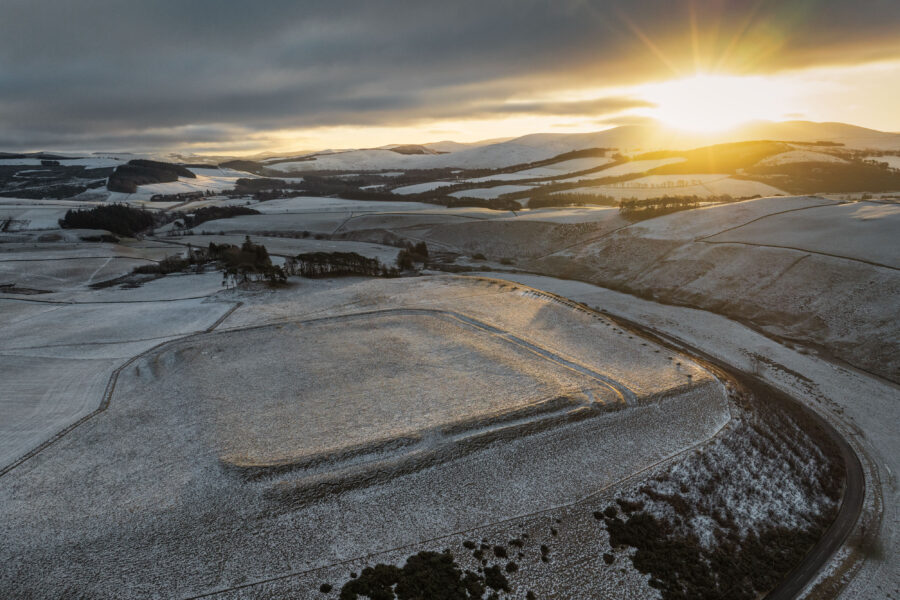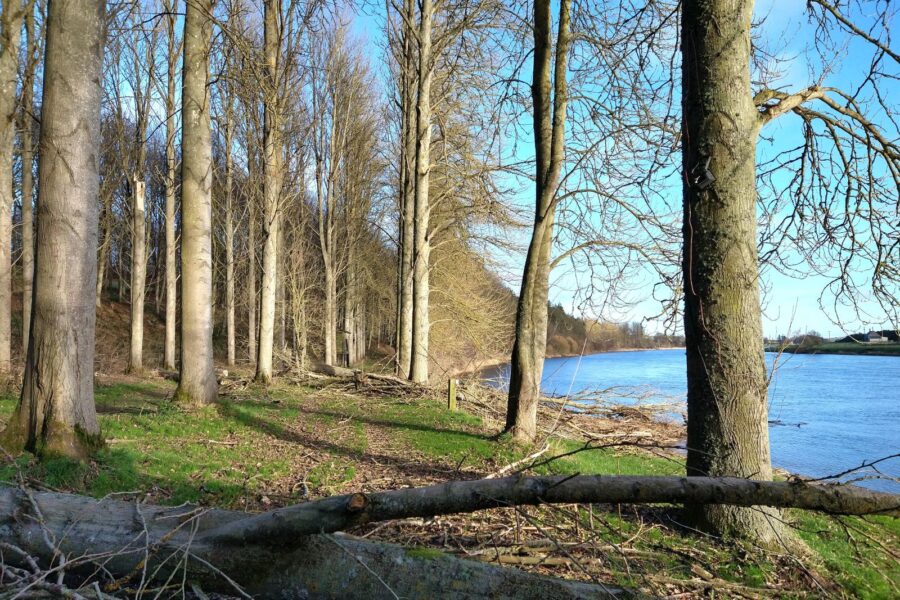Lyne Fort was constructed during the late Antonine period and, though it was likely occupied for only a few years, its legacy endures nearly 2000 years later.
First excavated in 1900, the fort’s layout is clearly visible. You can trace the outline of the turf and earth rampart which would have been flanked by a narrow kerb of natural boulders. Imagine the red sandstone buildings: the principia at the centre, to the Southern end of the fort a granary and the commandant’s house, a store or workshop to the North, all arranged around a busy courtyard.
While no inscriptions have been discovered, the fort’s size with two timber barracks and a possible stable suggests it housed a cohort of cavalry and infantry. The wide streets and a horseshoe found in 1901 hint at the presence of mounted troops.
Strategically positioned on the Roman road between the great forts of Trimontium near Melrose and Castledykes near Lanark, Lyne Fort is surrounded by other forts and camps, weaving a fascinating tapestry of Roman history.



